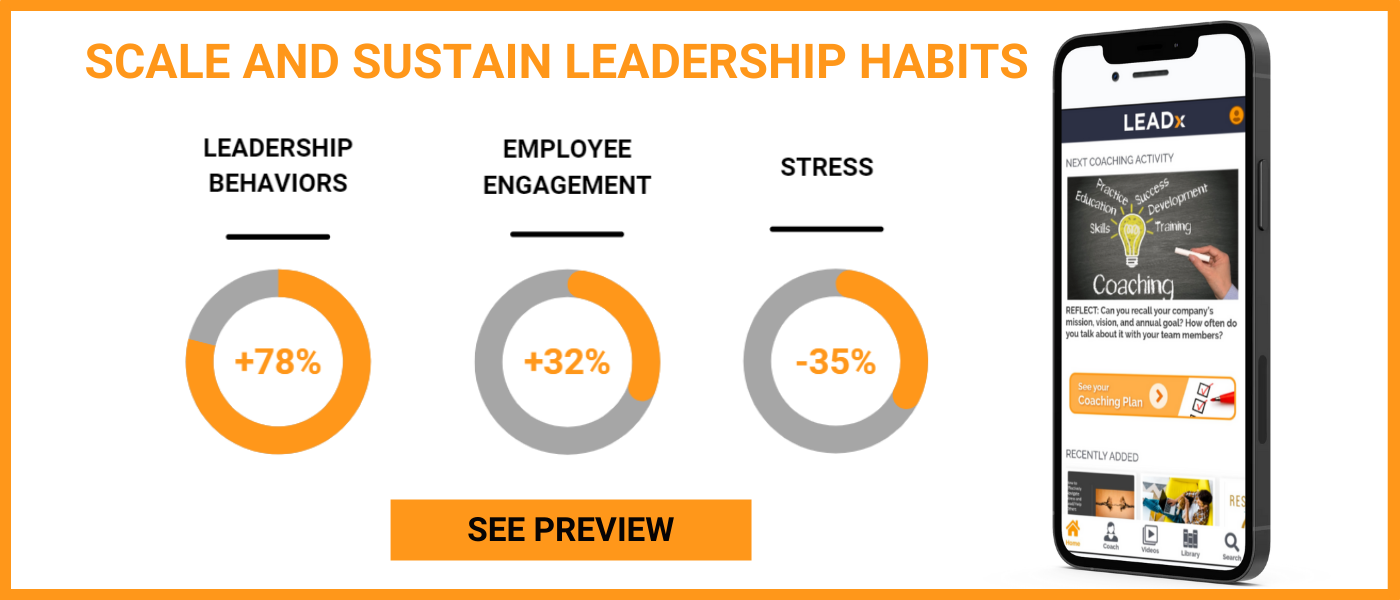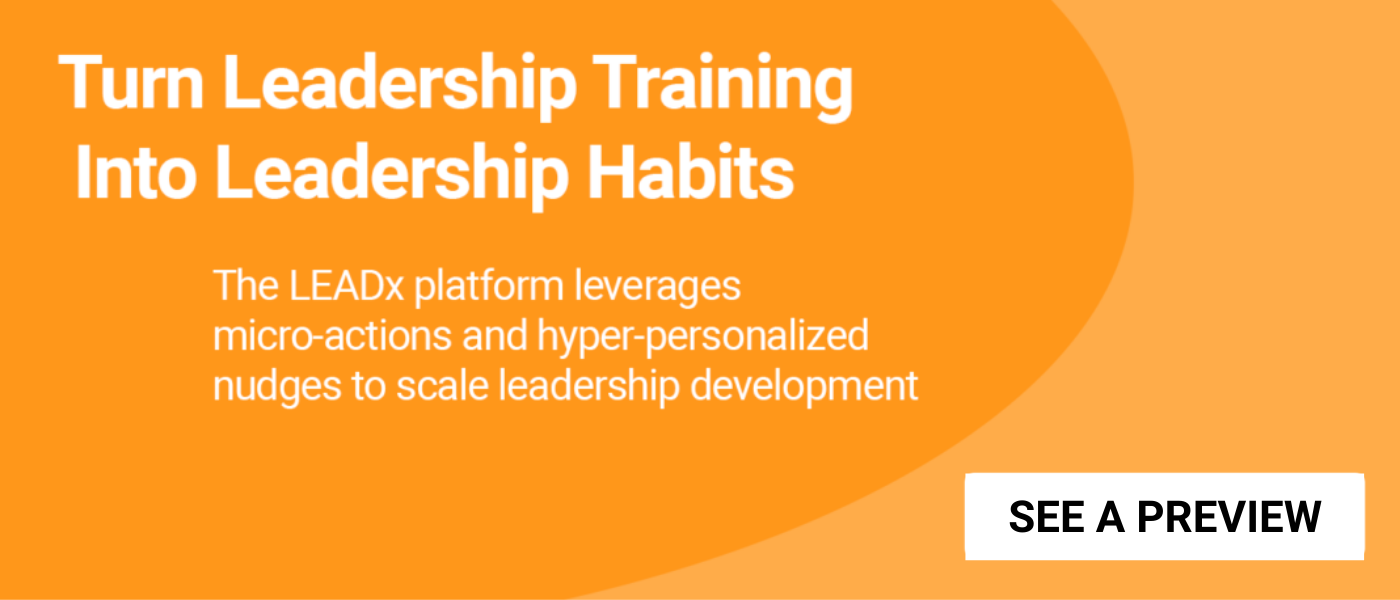
The struggle to overcome the “knowing-doing gap” is a familiar story with a predictable ending:
You create and deliver a top-notch “Effective Feedback” program for your new managers. They leave training inspired, equipped with new insights, and motivated to practice. But as the weeks go by, nothing changes. Your managers don’t give effective feedback. A gap opens up between what your managers know and what they apply. New habits never form.
Why, despite receiving top-notch training, aren’t leaders putting what they learn to use?
 Why Learning Doesn’t Automatically Translate to Behavior Change
Why Learning Doesn’t Automatically Translate to Behavior Change
Learning is of course essential to behavior change. That said, learning alone is insufficient.
Stanford behavioral scientist and bestselling author BJ Fogg’s Model of Behavior Change states that three things must coincide for someone to perform a behavior:
- Motivation: Often, leaders will leave a training feeling motivated to change.
- Ability: Motivation isn’t enough on its own. Many leaders lack the ability to put a new skill into practice. That might be the result of busy schedules, the structure of training, or something else.
- Prompt: Leaders often aren’t prompted to apply new skills post-workshop—so they don’t.
To get your learners across the knowing-doing gap, you have to build a bridge that incorporates each of Fogg’s conditions.
No one bridges this gap between knowledge and action better than executive coaches. After all, their success hinges on helping leaders achieve positive behavior change.
Eight Powerful “Coach Approach” Ingredients to use in Your Programs
To help leaders achieve behavior change, coaches pull from a repertoire of proven conversations and exercises. This same repertoire that coaches use can apply on a bigger scale—to your training programs.
Below are eight ingredients coaches leverage to change behavior. Mix and match these ingredients to build your own recipe for behavior change.
Measure and Assess Leaders’ Behaviors
Assessments, either by peers or the leaders themselves, provide critical feedback about blindspots and weaknesses.
- Self-assessments can help participants reflect on current behavior and uncover gaps in their knowledge and abilities (i.e., “I didn’t realize there were four steps to delegation, I’m only doing two.”).
- A 360 or employee engagement survey will give leaders insight into how other people rate their behavior and uncover growth areas.
When leaders understand how they fall short, this motivates them to practice and improve. It also gives them a map of behaviors and areas to work on.
Commitment Exercises
Ask your leaders to write down what they hope to gain from training and how they plan to overcome obstacles. Use these four questions:
- What are the benefits for you, your team, and the organization if you improve in this area?
- How would failing to improve in this area impact you and your team?
- What challenges will you face?
- What steps can you take to overcome those challenges and commit to the journey?
Cultivate Self-Awareness around Limiting Mindsets and Beliefs
Ask your leaders to think about and reflect on why they act the way they do. How might their beliefs get in the way of their development?
For example, a leader working on “giving effective feedback” may struggle because their personality is strong in “agreeableness,” which makes engaging in conflict a challenge.
The idea here is for your leaders to get to the root of their behavior. That way they can prepare to overcome mental barriers.
Re-Evaluate Learning Delivery
Traditional learning is still a tool you should leverage—it just can’t be the ONLY tool.
But in the spirit of the coach approach, reevaluate how you deliver learning:
- How do your leaders want to learn?
- Is a webinar really the best way to educate new managers on giving effective feedback?
- Would an in-person workshop, group coaching, or micro-learning be more effective?
- How can you leverage micro-learning in between training sessions?
- Are there learning opportunities you can provide in the flow of work?
Start to explore alternative paths to see which approach to learning best sets your leaders up to apply what they learned on the job.
Provide Practice Opportunities to “Ease In” to Application
It’s challenging for leaders to jump in and immediately apply what they learned on the job.
Practice exercises in a low-stakes, informal environment help leaders ease in. Through practice, leaders can build their confidence, refine their approach, and develop “muscle memory” before they try to implement what they learned in a higher-stakes situation. For example, when it comes to “giving effective feedback,” Kim Scott, author of bestseller Radical Candor, recommends the following approach:
- Week 1: Ask for feedback from others to get a sense of your organization’s culture around feedback.
- Week 2: Start to give positive feedback only.
- Week 3: Start to give constructive feedback as well.
Create a System of Social Support
Social support helps make learning less daunting. Here are five ways you can leverage social support:
- Activities where leaders can share reflections and discuss the skills they’re developing with their boss, peers, or team members.
- Peer learning networks.
- Group coaching sessions.
- Cohort-based learning.
- Learn-teach activities.
Each of these can help leaders establish a network of feedback, insights, and support.
Schedule Application into Leaders’ Calendars
Sometimes the best way to get leaders to move from learning to doing is to build the necessary time and structure directly into their schedules.
For example, if your leaders are working on “giving recognition,” have them block out fifteen minutes every Friday to provide recognition to team members.
Encourage Post-Training Reflection
Thoughtful reflection exercises can prompt behavior change by directing leaders’ attention to their behavior. After a program, ask your leaders to think through these questions:
- What did you learn through this experience?
- What new habits did you develop from this?
- How will this training impact your team?
- What are your plans to anchor this and support yourself moving forward?
- What questions do you still have about this topic?
From Ingredients to Recipes: Putting these Strategies into Practice
Adopt these strategies to move your leaders from learning to doing.
Remember, you don’t have to incorporate every strategy to impact behavior change. In our work at LEADx, for example, we often use three “coach approach” strategies per formal learning. We call this our 3-1 Learning Model, which states that, for every learning intervention, you should use three on-the-job application exercises.
It’s time to drop the “If you build it, they will come” mentality around leadership skills.
Instead, start applying these behavior change strategies now to maximize the behavioral impact of your training.







